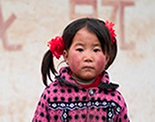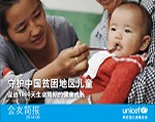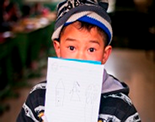A historic decision was made on 20 November 1989, when world leaders adopted the Convention on the Rights of the Child in the UN General Assembly. Since its inception 20 years ago, the Convention has become the most-ratified human rights treaty in history. This is testament to the common understanding among countries and communities that children have the right to survive and develop; to be protected from violence, abuse and exploitation; and for their views to be respected and actions concerning them to be taken in their best interests. Meeting children's rights is not only fundamental for their development and well-being, it is also pivotal to creating the world envisioned by the Millennium Declaration – a world of peace, equity, security, respect for the environment and shared responsibility – in short, a world fit for children.
Much has been achieved during the past 20 years. The annual number of under-five deaths has fallen from around 12.5 million in 1990 to less than 9 million in 2008. Between 1990 and 2006, 1.6 billion people worldwide gained access to improved water sources. Globally, around 84 per cent of primary-school-age children are attending school, and gender gaps in primary-school enrolment are shrinking across the developing world. The fight against the AIDS pandemic is intensifying and yielding results, with steady increases in the number of pregnant women with HIV receiving antiretroviral drugs to prevent mother-to-child transmission of the virus, and growing numbers of newborns and infants being tested and then also receiving the full course of medication to protect them from HIV.
Download File:
Click here




























